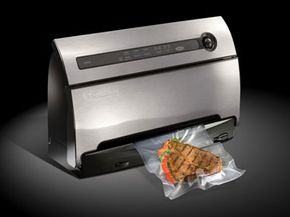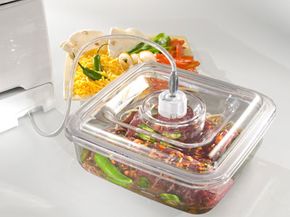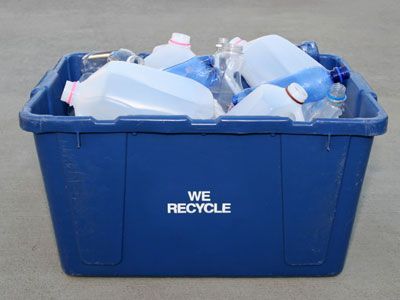It's among the more annoying experiences a human being can endure: You pull a potato chip from a bag you dutifully rolled up and closed as best as you could last night -- and find your chip has grown stale.
The nightmares get worse when you reach into the freezer and retrieve that fine Porterhouse steak you froze a few weeks ago, only to find it's browned and covered with what looks like liver spots and encrusted with ice crystals. You might call it freezer burn. What's going on here? There's actually a perfectly reasonable physical explanation for what happens when food goes stale or becomes freezer burned. It has to do with air.
Advertisement
Food may have an abundance or a lack of moisture. If it's moisture-laden, a chemical exchange with the ambient air occurs. Moisture escapes from a steak, for example, and dries it out. In the freezer, ice crystals form as moisture accumulates outside of the steak. Oxygen molecules in the ambient air fill the void left behind by the escaping water molecules. This is what browns the meat [source: LOC].
On the flip side, when chips -- which lack moisture -- are stored, the air exchange infuses them with water molecules, which makes them stale and soft. Food isn't the only foodstuff to suffer at the hands of an air exchange. Wine goes bad and soda loses its carbonation. Either way, it's a bad situation.
Fortunately, alternatives to freezer burn and stale chips abound. For one, there's the FoodSaver System -- a home vacuum sealer that removes the air surrounding the food we wish to store and helps to preserve it. Read the next page to learn about the mechanics behind this invention.
Advertisement



